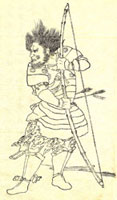
Source: Kamitsukenu-Tamichi, Hanna, Wikimedia Commons
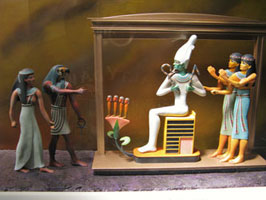
Source: Brightly Painted wall fragment from the tomb of Priest Amenemhet and wife Hemet Egypt Middle Kingdom Dynasty 12, Mary Harrsch, Flickr
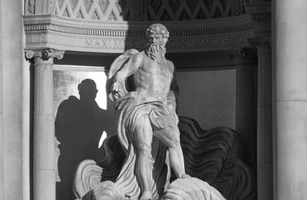
Source: Source: Greek God, Christina McCarty, Flickr
Almost every culture has its own mythology. Some ancient myths deal with large issues such as how the world began. Other myths help define what it means to live a good life. Myths from different cultures often address the same topics, but that does not mean they always agree.
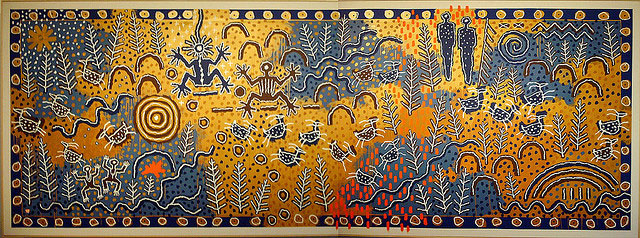
Source: fonseca creation story, Damon Taylor, Flickr
Humans have long been interested in how the world began. Each culture has its own version.
In the Chinese creation myth, the universe is created from a hen’s egg with the sun as the yolk and the sky as the egg white. From these, the earth and sea are formed. Pangu is born from the egg, and from his body, the mountains, the sun, and the moon form. In the Cherokee Indian myth of creation, animals play a key role. The Cherokee view the world, at creation, as being a sea held by four cords. The Cherokee creation myth is unlike many others in that the human form doesn’t appear until after the animals and plants have already been created.
Here are a few guiding questions you can use to help you understand and appreciate creation myths:
- Is there evidence of belief in deities in the myth?
- Is the culture monotheistic?
- Does the myth refer to human beings?
- What role (if any) does nature play in the myth?
- Did anything exist before “the beginning?”
- Is there mention of the afterlife?
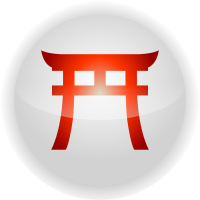
Source: Shinto torii icon vermillion,
Washiucho, Wikipedia
Below is a creation myth from the Japanese culture. Highlighted in the first selection are key portions of the texts that the reader might use to compare and contrast it with other myths. The numbers correspond to the guiding questions that the bits of information address.
Click on the shaded area in the text below to read a think-aloud analysis of the myth.

Next, read a creation myth from the Apaches, a Native American tribe who live in the southwestern United States. Use the guiding questions and the notes in the lesson about the Japanese myth to compare and contrast it with the Apache creation myth below. Find evidence in both texts to support your answers and your conclusions.
Apache Creation Myth
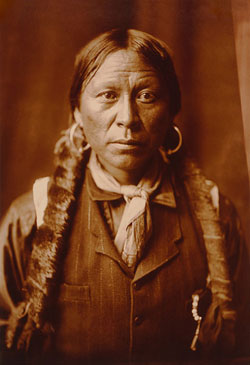
Source: A Jicarilla Man, 1904, Edward S. Curtis (sepia restored), Edward S. Curtis, Wikimedia
In the beginning nothing existed—no earth, no sky, no sun, no moon, only darkness was everywhere.
Suddenly from the darkness emerged a thin disc, one side yellow and the other side white, appearing suspended in midair. Within the disc sat a small bearded man, Creator, the One Who Lives Above. As if waking from a long nap, he rubbed his eyes and face with both hands.
When he looked into the endless darkness, light appeared above. He looked down and it became a sea of light. To the east, he created yellow streaks of dawn. To the west, tints of many colors appeared everywhere. There were also clouds of different colors.
Creator wiped his sweating face and rubbed his hands together, thrusting them downward. Behold! A shining cloud upon which sat a little girl.
“Stand up and tell me where are you going,” said Creator. But she did not reply. He rubbed his eyes again and offered his right hand to the Girl-Without-Parents.
“Where did you come from?” she asked, grasping his hand.
“From the east where it is now light,” he replied, stepping upon her cloud.
“Where is the earth?” she asked.
“Where is the sky?” he asked, and sang, “I am thinking, thinking, thinking what I shall create next.” He sang four times, which was the magic number.
Creator brushed his face with his hands, rubbed them together, then flung them wide open! Before them stood Sun-God. Again Creator rubbed his sweaty brow and from his hands dropped Small-Boy.
All four gods sat in deep thought upon the small cloud.
“What shall we make next?” asked Creator. “This cloud is much too small for us to live upon.”
Then he created Tarantula, Big Dipper, Wind, Lightning-Maker, and some western clouds in which to house Lightning-Rumbler, which he just finished.
Creator sang, “Let us make earth. I am thinking of the earth, earth, earth; I am thinking of the earth,” he sang four times.
All four gods shook hands. In doing so, their sweat mixed together and Creator rubbed his palms, from which fell a small round, brown ball, not much larger than a bean.
Creator kicked it, and it expanded. Girl-Without-Parents kicked the ball, and it enlarged more. Sun-God and Small-Boy took turns giving it hard kicks, and each time the ball expanded. Creator told Wind to go inside the ball and to blow it up.
Tarantula spun a black cord and, attaching it to the ball, crawled away fast to the east, pulling on the cord with all his strength. Tarantula repeated with a blue cord to the south, a yellow cord to the west, and a white cord to the north. With mighty pulls in each direction, the brown ball stretched to immeasurable size--it became the earth! No hills, mountains, or rivers were visible; only smooth, treeless, brown plains appeared.
| Guiding Questions | Japanese Creation Myth | Apache Creation Myth |
|---|---|---|
| Evidence of belief in deities in the myth? | ||
| Myth’s culture is monotheistic? | ||
| Human beings are part of the myth? | ||
| Nature plays a role in the myth? | ||
| Something existed before “the beginning”? | ||
| Afterlife mentioned in the myth? | ||
| Comparison | ||
Sample Responses:
| Guiding Questions | Japanese Creation Myth | Apache Creation Myth |
|---|---|---|
| Evidence of belief in deities in the myth? | No | Yes, the Creator |
| Myth’s culture is monotheistic? | No | No |
| Human beings are part of the myth? | No | Yes, a little girl |
| Nature plays a role in the myth? | Yes, clouds are mentioned. | Yes, a cloud and a tarantula |
| Something existed before “the beginning”? | Yes, the earth was in a beaten and shapeless kind of matter. | No |
| Afterlife mentioned in the myth? | Yes, Heaven | No |
| Comparison The Japanese myth sounds more like science because of the words “particles” and “light.” There aren’t any people, and there is not much about nature, only a mention of the clouds. The Apache myth is more like a story. The beginning of the earth is explained in a more simplistic way. There are people and animals but no mention of “Heaven” or an afterlife. | ||